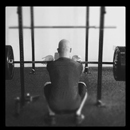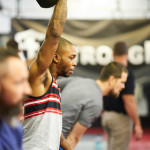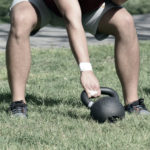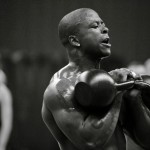A barbell clean and a kettlebell clean are two completely different movements, but both could fit this description:
CLEAN [barbell or kettlebell]: A power exercise with a quick transition between tension and relaxation that requires proper positioning of the path of the implement in order to successfully complete the lift with maximal efficiency.
Of the six fundamental SFG Level I skills, the kettlebell clean seems to be the toughest exercise for people to “get” and perform proficiently. Which is why I’m going to share how the coaches at my gym use weightifting techniques to effectively teach the kettlebell clean.
The Problems With Coaching the Kettlebell Clean
Part of the problem for many beginners is applying too much tension and force production. Though these are important aspects of the movement, they should not be the focus when first learning. The trajectory and positioning of the kettlebell need to take precedent, otherwise too great an emphasis on power will throw off the timing and mechanics of the movement.
The kettlebell clean has been described as:
“a swing that ends up in the rack position.”
While I agree with this — especially regarding the kinematics of the movement (deep hip hinge into a strong and stable front rack position), the actual projection of force is a bit different.
- In the swing, the goal is to place force into the ground and project that force (through the body, through the arms and into the kettlebell) horizontally.
- In the clean, that transfer of energy needs to be quickly redirected vertically, with the elbow attached to the rib cage and acting as the fulcrum.
When there is too much emphasis on horizontal force production, positioning of the fulcrum is sacrificed (i.e. “casting” the bell), and the only way to recover is to violently jerk the weight back into the rack. This leads to excessive impact at the top of the clean, massive energy leaks, and a sub-optimal set-up for any ensuing pressing and squatting.
Below is the teaching progression we use at Achieve Fitness after we introduce the grip and proper rack position of the kettlebell.
1. Tall Muscle Clean
Similar to the barbell tall muscle clean, we like to teach the tall muscle kettlebell clean to groove the path of the kettlebell and familiarize the student with the “roll” around the wrist. By taking the legs out of the equation, we can focus on the path of the kettlebell and prevent the hands from vice gripping the handle. This allows a smooth roll into the rack position. Keep in mind, the bell should be light (I’m using 12kg in the video).
2. Low Swing
Perform a normal Hardstyle kettlebell swing, but only with enough force to get the bell(s) to float to a level no higher than your belly button.
3. Low Swing “High Pull”
Just like with the Olympic lifts, you don’t want your arms to overpower the drive from the legs, but that doesn’t mean your arms are not active. Once the kettlebell reaches a “weightless” state at the top of the low swing, you want the upper arms to kick in a bit and assist in redirecting the trajectory upward. Bend at the elbows to an angle of about ninety degrees.
4. “Spear”
Once the bell is directed upward, you then want to settle it back into a front rack position using the “roll” taught during the tall muscle clean and a “spearing” motion with the fingers. The spear helps to further eliminate over-gripping the bell and allows for a smooth transition into the rack position.
5. Clean
And finally the full clean.
It might take some practice, but piecing these aspects together for your student should give a deeper understanding of the movement and help him or her to quickly develop the skill. If your student still has trouble with the lift, revisit the hip hinge, deadlift, and swing, or there might be an underlying fundamental movement issue at hand.
We’ve had a lot of success with this progression for our students who have had a tough time understanding the movement, and we hope it helps yours, too.









I don’t know how I missed seeing this when it came out – very good!
-S-
I agree. The clarification around how high to swing the kettlebell is so helpful. It took me a while to reverse engineer that process. And big thanks for the slow motion videos. It makes a huge difference. Pardon me if I missed it but do you have a snatch post coming up? I would love to see how you teach that.
I have broken the clean down in a similar way, but using the cheat clean or two hands clean as the first step, rather than the muscle clean. I like your approach!
The most effective cue I’ve given is one of the standards right from the SFG 1 manual: “The kettlebells travel the shortest distance possible.” This notion really resonates with my students. This is the thought behind the steps that I use to teach the movement.
Thanks for putting things together so succinctly!